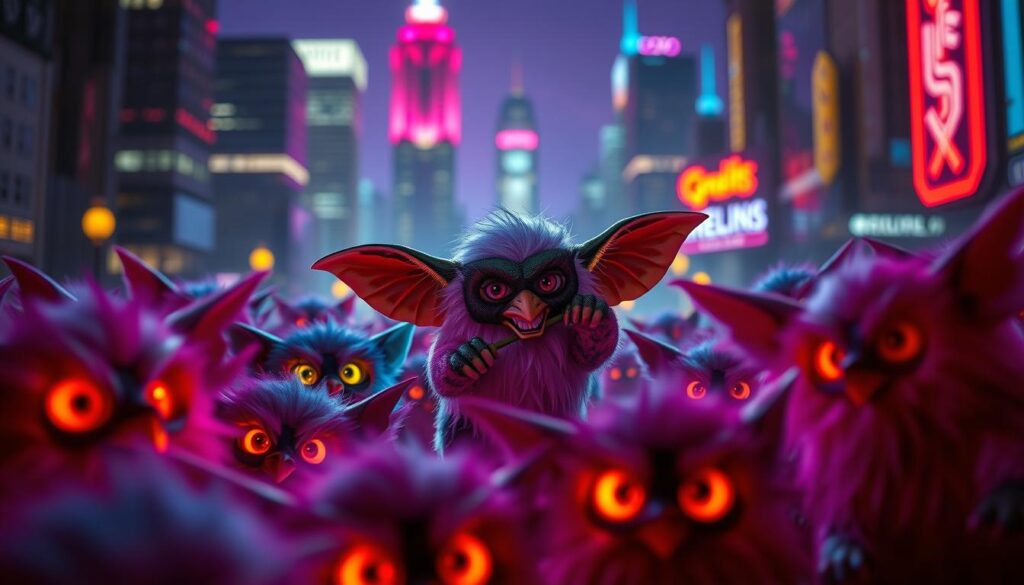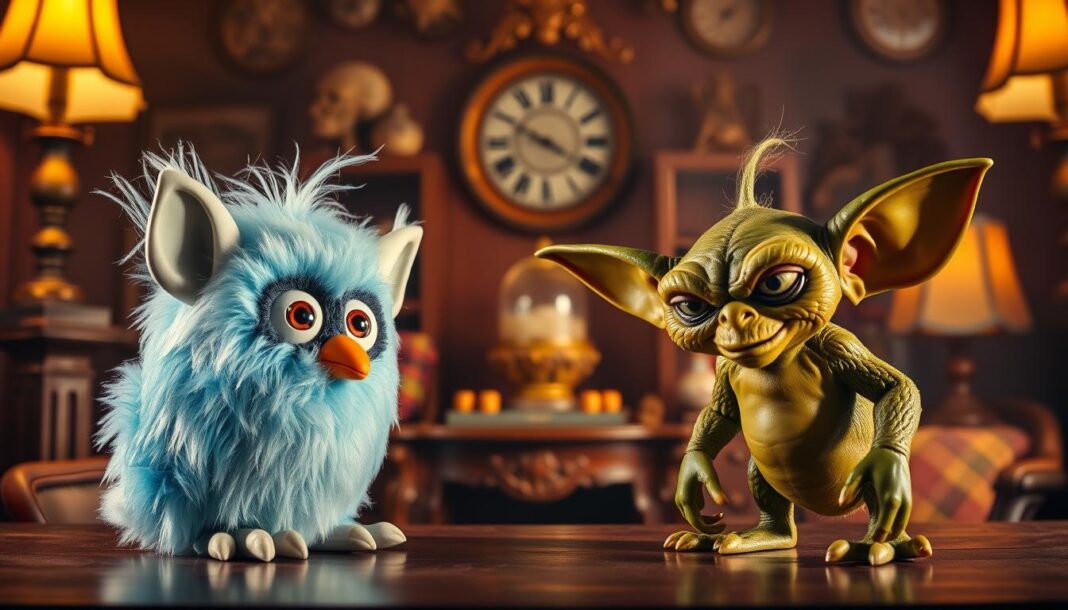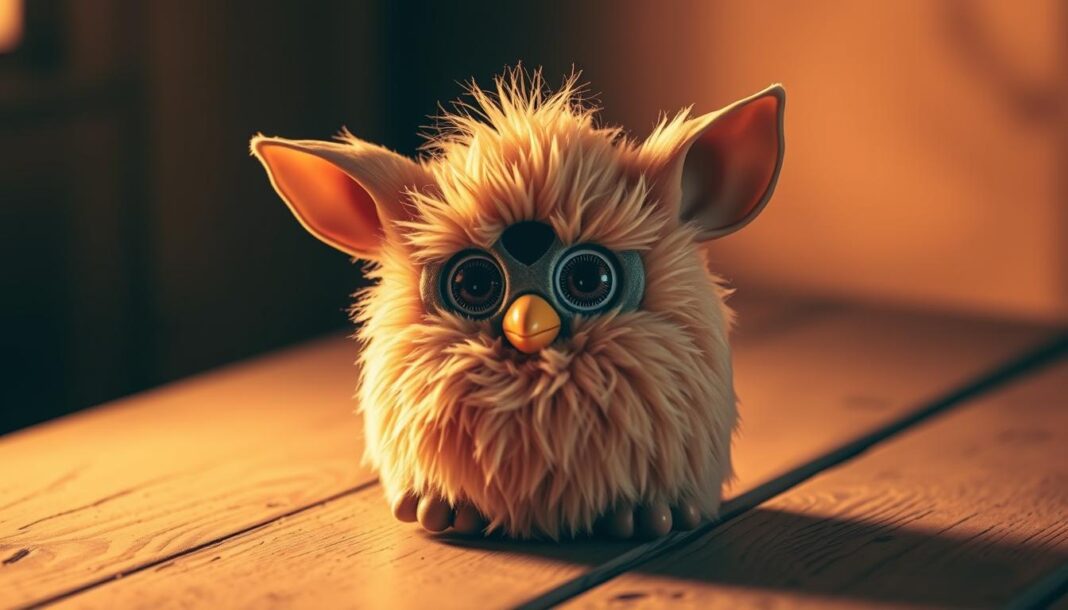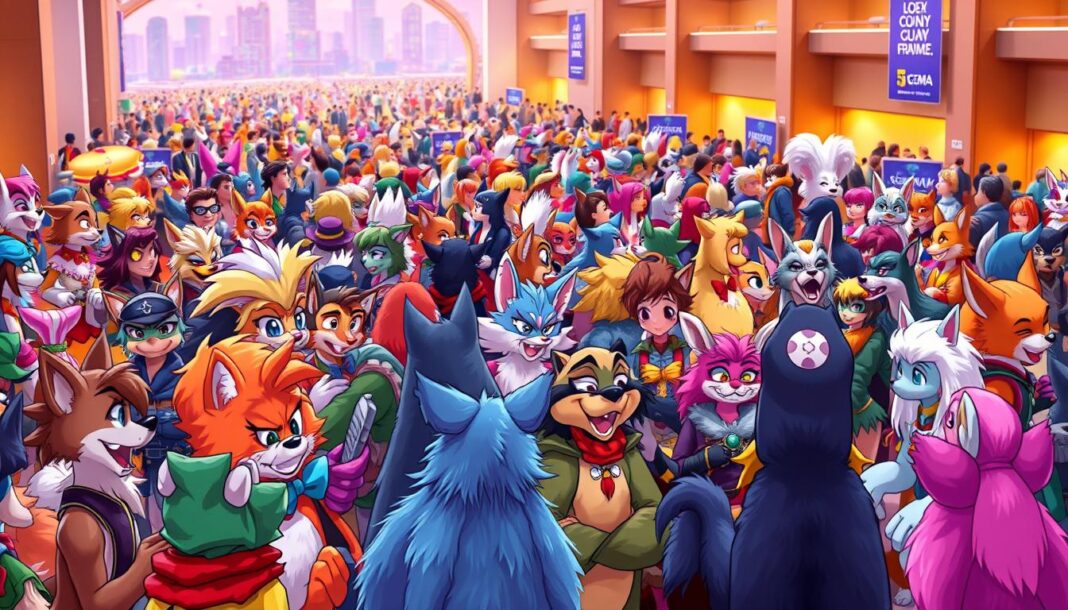The 90s introduced two unforgettable creatures that shaped pop culture. One became a must-have electronic toy, while the other leaped from the silver screen into collectors’ hearts. Their impact still resonates in today’s vintage markets.
Released eight years apart, these icons represent different eras of playtime magic. The fuzzy interactive companion debuted in 1998, selling over 40 million units worldwide. Meanwhile, the mischievous movie monsters spawned a merchandise empire after their 1984 debut.
What makes these toys stand the test of time? Their designs reflect technological evolution while capturing childhood imagination. For enthusiasts, understanding their collectible value reveals fascinating cultural shifts.
Both became global phenomena, yet their paths to fame couldn’t be more different. One revolutionized interactive play, while the other extended a cinematic world. This comparison explores why they remain beloved decades later.
Furby vs Gremlin: Origins of Two Iconic 90s Toys
One started as a high-tech experiment, the other as a Hollywood creation. Their journeys from concept to cult status reveal how toys capture cultural moments.
Furby: Tiger Electronics’ Interactive Sensation
Developed by Tiger Electronics, the first interactive pet hit shelves in 1998. Its patented “Furbish” language system could “learn” English over time, blending robotics with charm.
After 18 months of R&D, the toy became a holiday craze. By 1999, shortages spiked black market prices. Today, the original Furby toy remains a prized collectible.
Gremlins: From Movie Screens to Toy Shelves
Warner Bros’ 1984 movie spawned a toy line in 1990. Playmates Toys crafted figures faithful to the character designs, from Gizmo to Stripe.
Unlike Furby’s original IP, these toys leveraged existing fame. Strict licensing ensured each character matched their cinematic roots.
| Aspect | Furby (1998) | Gremlins Toys (1990) |
|---|---|---|
| Developer | Tiger Electronics | Playmates Toys |
| Inspiration | Original IP | Movie adaptation |
| R&D Time | 18 months | 6 months |
| Key Feature | Interactive language | Film-accurate sculpts |
Design and Appearance: Ears, Eyes, and Creature Charm
Creature aesthetics tell distinct stories through fur, claws, and expressions. One prioritized cuddly interactivity, the other embraced cinematic menace. Their appearance became as iconic as their functions.
Furry Face and Technological Beak
The owl-inspired face hid advanced mechanics. An infrared sensor inside the beak responded to touch, while 18 color combinations catered to personal tastes. Early models used LCD eyes that later evolved to vibrant LEDs.
Plush synthetic fur invited handling, contrasting with hard plastic ears containing tilt sensors. This blend made the toy durable yet huggable—a balance that defined its appeal.
Screen-Accurate Mayhem
Vinyl claws and rubber fangs replicated movie prosthetics perfectly. Designers softened the R-rated edges slightly, keeping mohawks and pointed ears recognizable. Even the eyes glowed with the same mischievous glint seen on film.
Interactive Gizmo hybrids borrowed tech from its electronic rival. Yet they retained the Mogwai’s signature face proportions. Darker palettes contrasted sharply with the other’s pastel options.
For collectors, these appearance details determine value. Rare prototypes with alternate fur patterns command premium prices today.
Interactive Features: Voice, Language, and Play
Technology transformed how children engaged with their favorite creatures. Behind the fuzzy exteriors lay systems that responded to touch, sound, and even time. These innovations set new standards for interactive play in their respective eras.

The Furbish Learning Curve
Early models communicated in a proprietary language called Furbish. Over weeks of interaction, they gradually incorporated English phrases from their 160-word vocabulary. This simulated learning process used basic pattern recognition rather than true AI.
The 2008 reboot improved voice recognition significantly. New sensors could detect clapping or petting motions. As one collector notes:
“Watching your toy ‘learn’ English felt like magic—even if it was pre-programmed.”
Action-Packed Antics
Movie-inspired figures focused on physical play mechanics. Pull-string voice boxes recreated famous lines, while spring-loaded tongues shot foam projectiles. Unlike their electronic counterpart, these features required manual activation.
The rare Interactive Gizmo borrowed tech from its rival. It shared the same 160-phrase capacity but added unique responses. Squeezing its belly triggered random giggles or hiccups—Easter eggs that delighted fans.
| Feature | Electronic Companion | Cinematic Figures |
|---|---|---|
| Response Type | Progressive learning | Instant action |
| Activation | Voice/sensor-based | Manual mechanisms |
| Special Traits | Sleep cycles | Projectile attacks |
| Tech Influence | Paved way for Hatchimals | Inspired later action figures |
These differing approaches reflect their origins. One prioritized simulated intelligence, while the other delivered theatrical physicality. Both left lasting marks on toy development through the 2000s.
The Quirky Crossover: Furby Meets Gremlins 2
Hollywood and toy factories collided in unexpected ways during the 90s. This fusion created hybrid creatures that blended film magic with interactive tech. One standout moment happened in 1990’s Gremlins 2, where the lines between these worlds blurred creatively.

Gizmo’s Technological Transformation
The movie‘s laboratory scene showed scientists testing Mogwai reactions to electronic stimuli. Observant fans noticed eerie similarities to Tiger Electronics’ later designs. The character‘s wide-eyed curiosity seemed to predict the coming toy revolution.
By 1999, this foreshadowing became reality. Warner Bros and Hasbro released the Interactive Gizmo with:
- Howie Mandel’s original film voice recordings
- Shared sensor tech from the electronic pet
- 160+ phrase capacity at $34.99 MSRP
Collector Frenzy and Shared Universes
Limited production (250k units) made these hybrids instant rarities. Today, sealed versions fetch $300+ at auction. Factory codes (WT batches) fuel speculation about secret production links between the toy lines.
Enthusiasts still debate whether these creatures inhabit the same fictional world. Bootleg knockoffs like Baby Brainy only deepened the mystery, blending features from both franchises.
| Aspect | Interactive Gizmo (1999) | Film Inspiration |
|---|---|---|
| Tech Basis | Modified Furby hardware | Gremlins 2 lab concepts |
| Voice Actor | Howie Mandel | Original movie cast |
| Market Impact | Rare collectible | Expanded merchandise line |
Cultural Impact: Collectibility and Nostalgia
Generation Z’s rediscovery has rewritten the rules of vintage toy collecting. What began as childhood playthings now command serious attention from investors and pop culture archivists alike. The emotional connection spans generations—millennials relive their youth while newcomers appreciate retro charm.
Electronic Companion’s Market Evolution
Seven generations (1998-2023) created distinct collector tiers:
- 1998 Originals: Mint condition units fetch $300+
- 2012 Emoto-Tronic: Rare Japanese imports prized
- 2023 Models: $69.99 retail with modding potential
TikTok’s #FurbyRevival surpassed 500M views, fueling a bizarre customization trend. Artists dismantle modern units to create “goth” and cyberpunk variants. This DIY movement actually increases values for untouched vintage stock.
Cinematic Icons’ Unexpected Comeback
Warner Bros’ 2024 animated series revival will introduce new merchandise lines. Meanwhile, 2021’s NFT drop saw Gremlins-themed digital art sell out in 37 minutes. Physical rarities still dominate:
| Item | 1990 MSRP | 2023 Value |
|---|---|---|
| Lab Playset | $24.99 | $1,200 |
| Prototype Stripe | N/A | $8,500 |
As one auction specialist observes:
“The mohawked figures appreciate faster than tech stocks—with zero crashes since 2015.”
Etsy’s crossover merch proves both fandoms overlap. Handmade Gremlin-themed skins for electronic companions sell for $45+, while 3D-printed hybrid sculptures command $300+. This unofficial market suggests untapped licensing potential.
Final Verdict: Which Toy Wins the Nostalgia War?
Modern collectors face a delightful dilemma when choosing between these legendary toys. One revolutionized interactive play with evolving voice tech, while the other mastered film-to-merchandise magic.
The electronic companion dominates for tech historians. Its six revamps prove lasting engineering appeal. Meanwhile, cinematic figures command higher resale values—$120 vs $45—thanks to cult film status.
Consider appearance preferences too. Do you favor expressive LCD eyes or screen-acurate snarling faces? Battery life tips scales toward the self-contained option, though rare variants of both defy depreciation.
Ultimately, your goal decides. Choose innovation’s timeline or Hollywood’s enduring mischief. Both deliver nostalgia, just through different toy-making philosophies.


